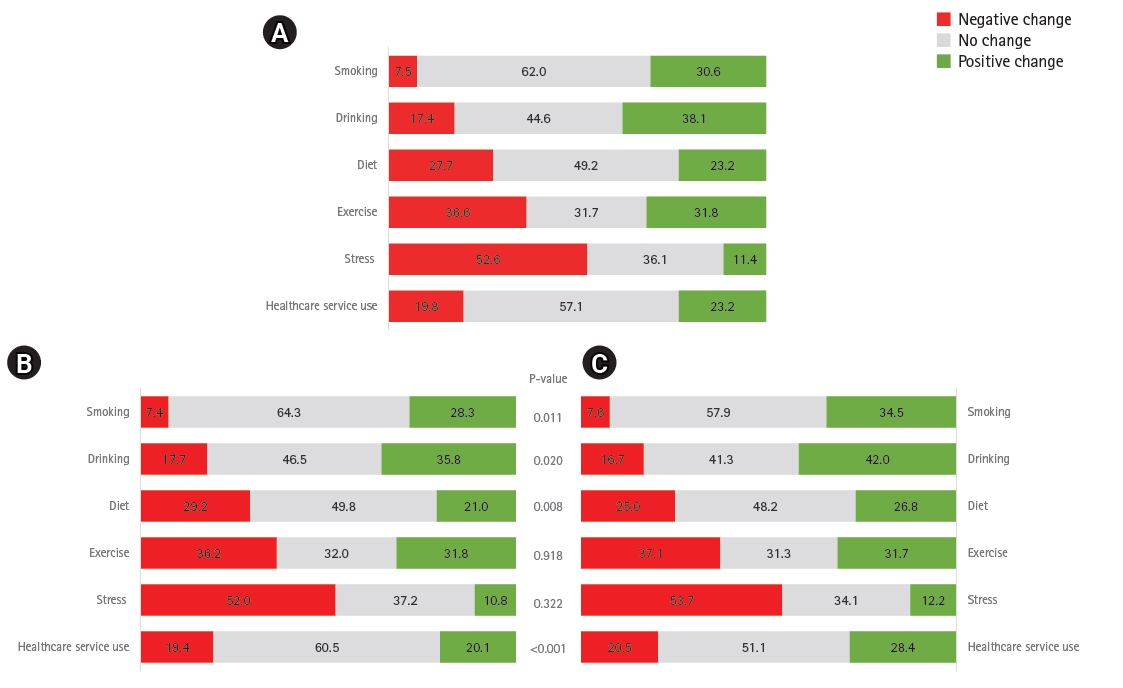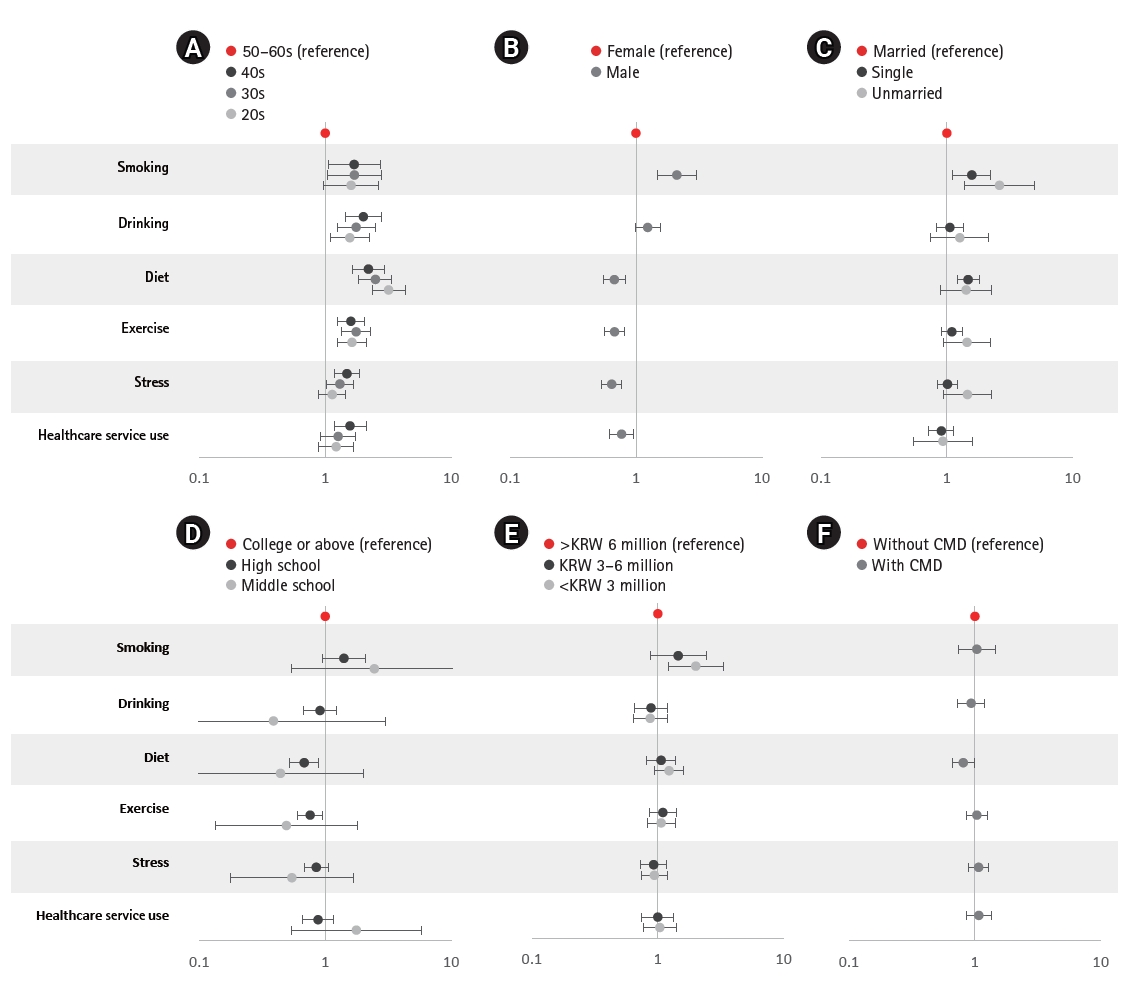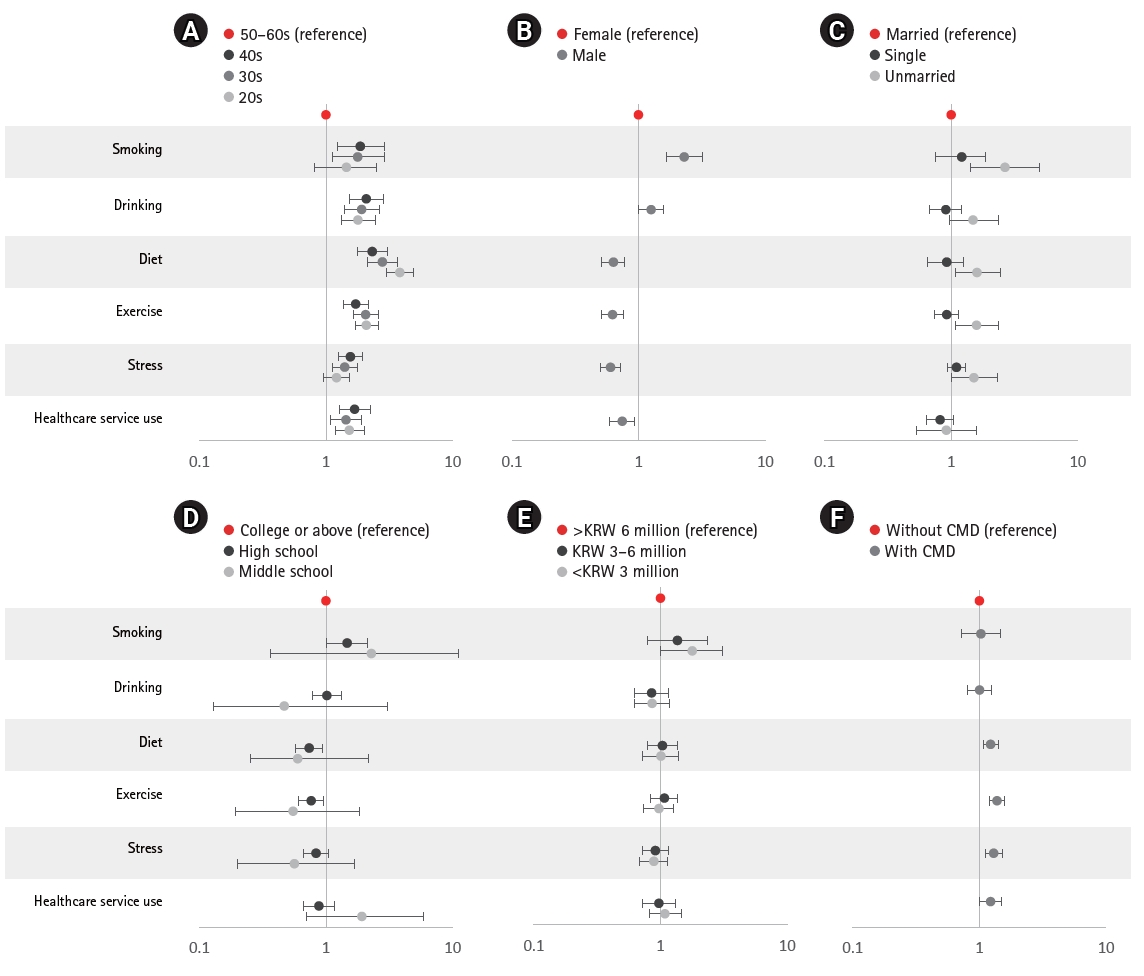 , Chan-Hee Jung2
, Chan-Hee Jung2 , Dae Jung Kim3
, Dae Jung Kim3 , Seung-Hyun Ko4
, Seung-Hyun Ko4 , Hae-Young Lee5
, Hae-Young Lee5 , Kyung-Yul Lee6
, Kyung-Yul Lee6 , Dae Ryong Kang7
, Dae Ryong Kang7 , Sung Kee Ryu8
, Sung Kee Ryu8 , Won-Young Lee9
, Won-Young Lee9 , Eun-Jung Rhee9
, Eun-Jung Rhee9 , Hyeon Chang Kim1
, Hyeon Chang Kim1
1Department of Preventive Medicine, Yonsei University College of Medicine, Seoul, Korea
2Department of Internal Medicine, Soonchunhyang University College of Medicine, Asan, Korea
3Department of Endocrinology and Metabolism, Ajou University School of Medicine, Suwon, Korea
4Department of Internal Medicine, St. Vincent’s Hospital, College of Medicine, The Catholic University of Korea, Suwon, Korea
5Department of Internal Medicine, Seoul National University College of Medicine, Seoul, Korea
6Department of Neurology, Gangnam Severance Hospital, Yonsei University College of Medicine, Seoul, Korea
7Center of Biomedical Data Science, Yonsei University Wonju College of Medicine, Wonju, Korea
8Department of Health Promotion Medicine, Ewha Womans University College of Medicine, Seoul, Korea
9Division of Endocrinology and Metabolism, Department of Internal Medicine, Kangbuk Samsung Hospital, Sungkyunkwan University School of Medicine, Seoul, Korea
Copyright © 2023 Korean Society of Cardiovascular Disease Prevention; Korean Society of Cardiovascular Pharmacotherapy.
This is an open-access article distributed under the terms of the Creative Commons Attribution Non-Commercial License (http://creativecommons.org/licenses/by-nc/4.0/) which permits unrestricted non-commercial use, distribution, and reproduction in any medium, provided the original work is properly cited.
Ethical statements
Not applicable.
Conflicts of interest
The authors have no conflicts of interest to declare.
Funding
None.
Acknowledgments
The current study used data from the Cardiovascular Disease Prevention Awareness Survey, which was conducted by the Korean Society of Cardiovascular Disease Prevention (KSCP), and surveyed by a professional research agency, Embrain (Seoul, Korea).
Author contributions
Conceptualization: CHJ, DJK, SHK, HYL, KYL, DRK, SKR, WYL, EJR, HCK; Data curation: EK, EJR, HCK; Formal analysis: EK; Methodology: DRK, EJR, HCK; Project administration: WYL, EJR; Supervision: HCK; Validation: DJK, HYL, WYL; Visualization: EK; Writing–original draft: EK, HCK; Writing–review & editing: CHJ, DJK, SHK, HYL, KYL, DRK, SKR, WYL, EJR, HCK. All authors read and approved the final manuscript.



